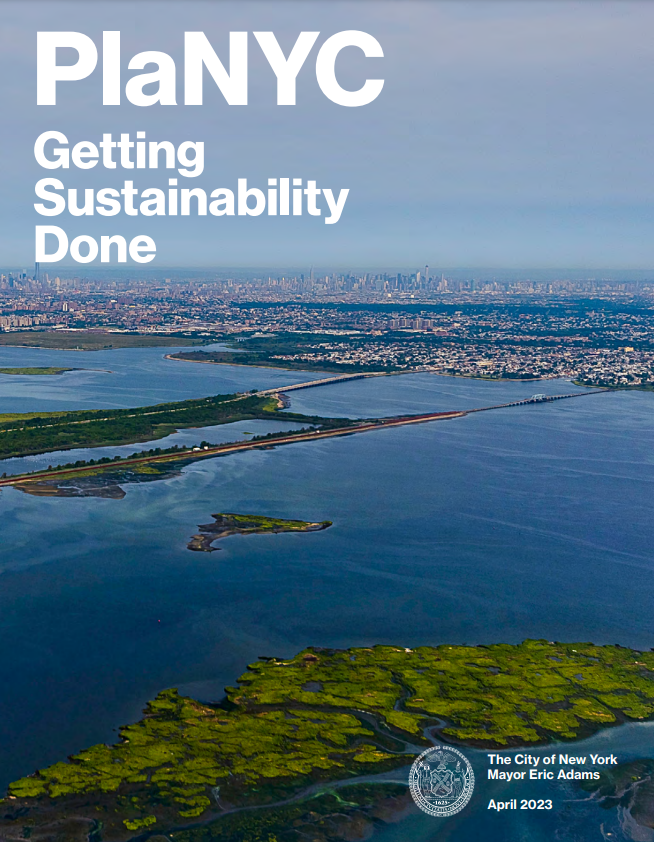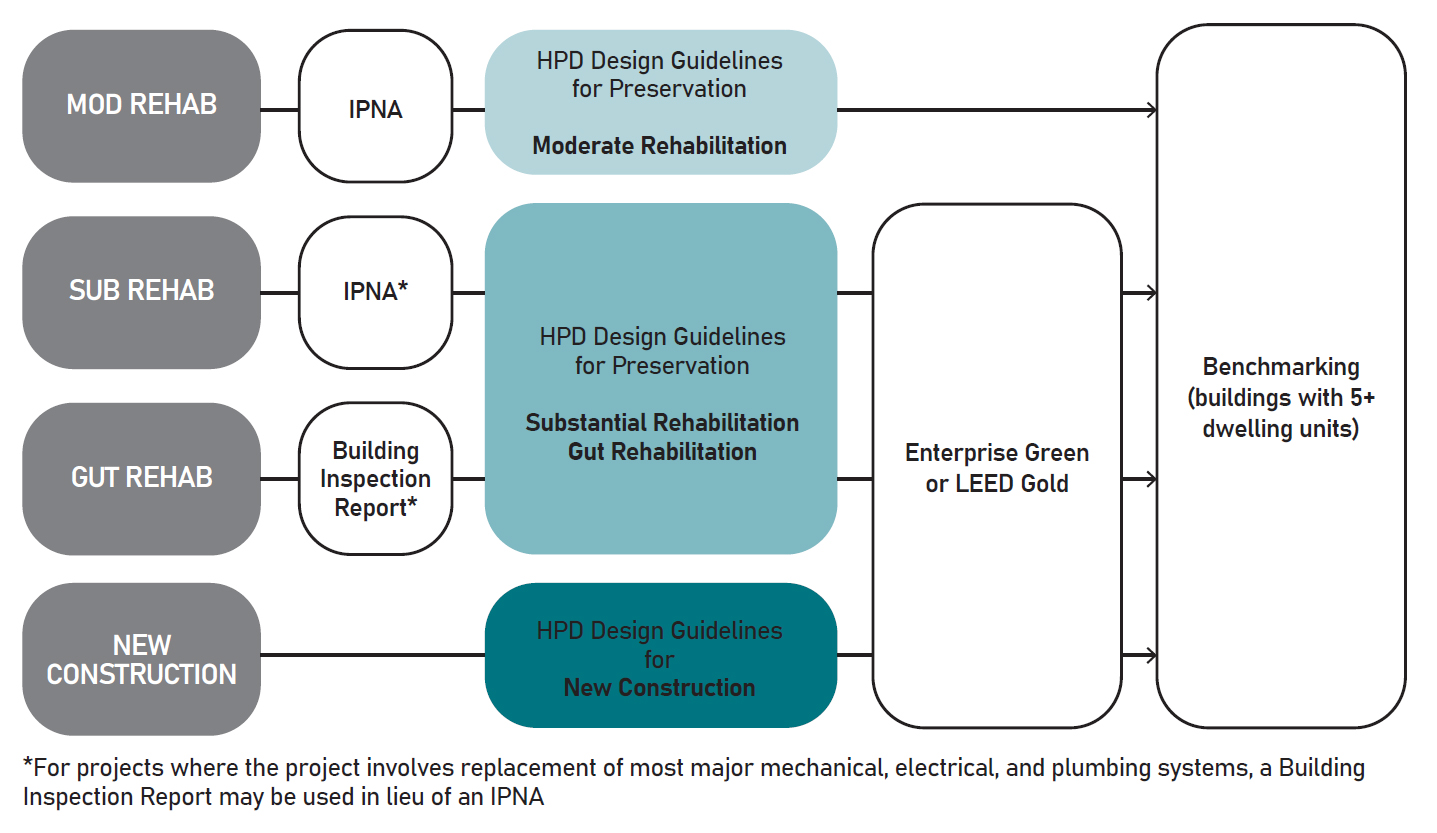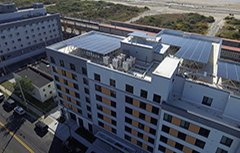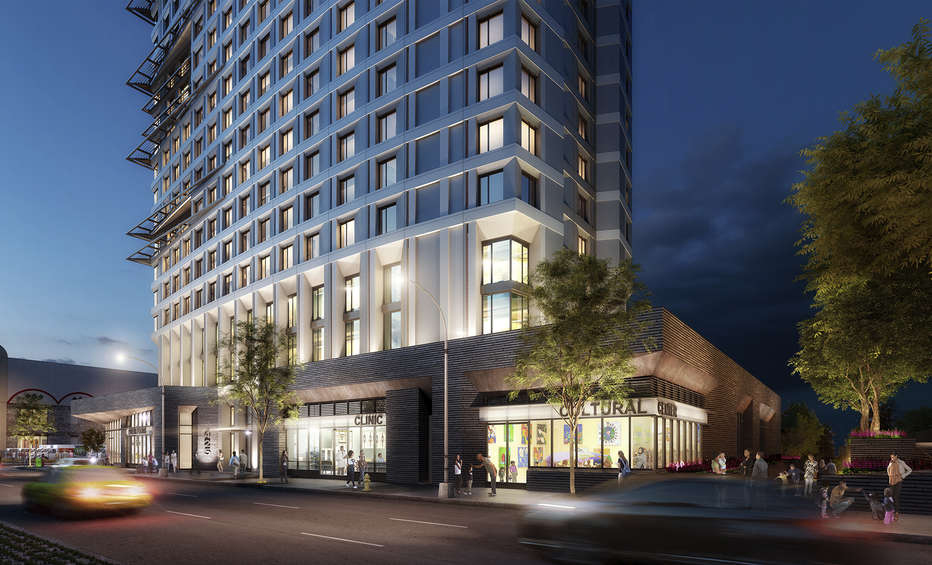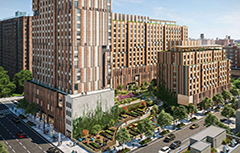
 Housing Preservation & Development311
Housing Preservation & Development311 Search all NYC.gov websites
Search all NYC.gov websites
Sustainability
HPD's Sustainability Goals
HPD’s Sustainability team spearheads initiatives to meet the City’s ambitious goals of an 80% reduction in emissions by 2050, while focusing on the resiliency and health of our buildings and residents. To achieve these goals, HPD is taking a multi-pronged approach that creates programs and policies across our agency’s operations.
In Mayor Adams’ Housing our Neighbors: A Blueprint for Housing and Homelessness, HPD has committed to fast-tracking equitable decarbonization and releasing Design Guidelines that will ensure these goals can be met across our portfolio.
HPD was also one of 35 city agencies and offices to help develop PlaNYC: Getting Sustainability Done, New York City's long-term strategic climate plan that highlights efforts the city is taking to protect New Yorkers from climate threats, improve quality of life, and build the green economy.
The need for our work to mitigate and respond to multiple risks and everyday threats -- like the ill effects of climate change and housing affordability -- has never been more important.
Sustainability Framework
The sustainability framework ensures that all of HPD's development projects meet minimum sustainability standards while also complying with benchmarking requirements.
Sustainability Framework Resources
Integrated Physical Needs Assessment (IPNA): IPNA integrates an evaluation of energy, water, and health needs into a full roof-to-cellar assessment of a property's physical conditions to ensure that the holistic needs of the property are addressed.
HPD’s Design Guidelines for Preservation are a major component of HPD’s Sustainability Framework. The Guidelines establish a minimum design standard that ensures that all HPD projects can meet NYC’s ambitious climate goals and laws while incorporating best practices for resiliency, health, and safety.
HPD's Design Guidelines for New Construction: Establishes the design criteria by which BLDS will evaluate proposed developments upon application to HPD for financial assistance. The Guidelines complement requirements in EGCC or LEED. The Guidelines will be updated in the summer of 2023. Stay tuned!
Enterprise Green Communities Criteria (EGCC): The EGCC is the only comprehensive green building framework designed for affordable housing, prioritizing carbon reduction, community health and well-being, and ensuring that buildings "can withstand disasters that can upend lives and destroy whole communities."
Benchmarking Protocol: As of February 1, 2016, buildings receiving HPD financing are required to benchmark and track utility usage for heating, electric, and water using one of three prequalified providers.
Sustainability Pilots and Programs
HPD-NYSERDA Resilient & Equitable Decarbonization Initiative (REDi): REDi is a long-term joint HPD-NYSERDA initiative that builds on HPD’s highly successful Retrofit Electrification Pilot and other joint programs and is an innovative model for streamlining access to financial and technical assistance from New York State. REDi will build capacity and scale up equitable decarbonization, beneficial electrification, and resiliency in the HPD development pipeline.
HPD-NYSERDA Retrofit Electrification Pilot: Through an innovative joint pilot program with NYSERDA, owners with projects in HPD's Preservation pipeline were eligible to receive grant funding to incorporate electrification of hot water heating systems or space heating and cooking into HPD Preservation scopes. This program is closed and project teams are encouraged to apply to REDi Existing Buildings instead.
HPD-NYSERDA Future Housing Initiative provides HPD-financed multifamily new construction projects with additional NYSERDA incentives to achieve Passive Housing Certification.
Solar Where Feasible: Preservation projects financed by HPD are required to complete a Solar Feasibility Analysis and install solar where it is financially feasible. HPD has partnered with non-profit Solar One to create tools and provide free technical assistance to identify and optimize solar projects across HPD's portfolio.
Sustainability Policies and Tools
Underwriting Electric and High-Performance Buildings: Includes newly developed policies, standards and tools that help underwrite and comply with HPD development projects requirements.
HPD's Policy on Electric Heating is meant to encourage inclusion of highly efficient heat pumps but ensure residents are protected. The policy notes which equipment is allowed and when resident-paid heating is permissible.
Local Law 97 Compliance
The Climate Mobilization Act of 2019 included Local Law 97 (LL97), which sets increasingly stringent caps on greenhouse gas emissions from the city’s largest buildings starting in 2024. Most buildings over 25,000 square feet will be subject to LL97, and buildings that exceed their annual emissions limits will face financial penalties. Affordable housing may have an alternative compliance pathway as seen by the graphic below.
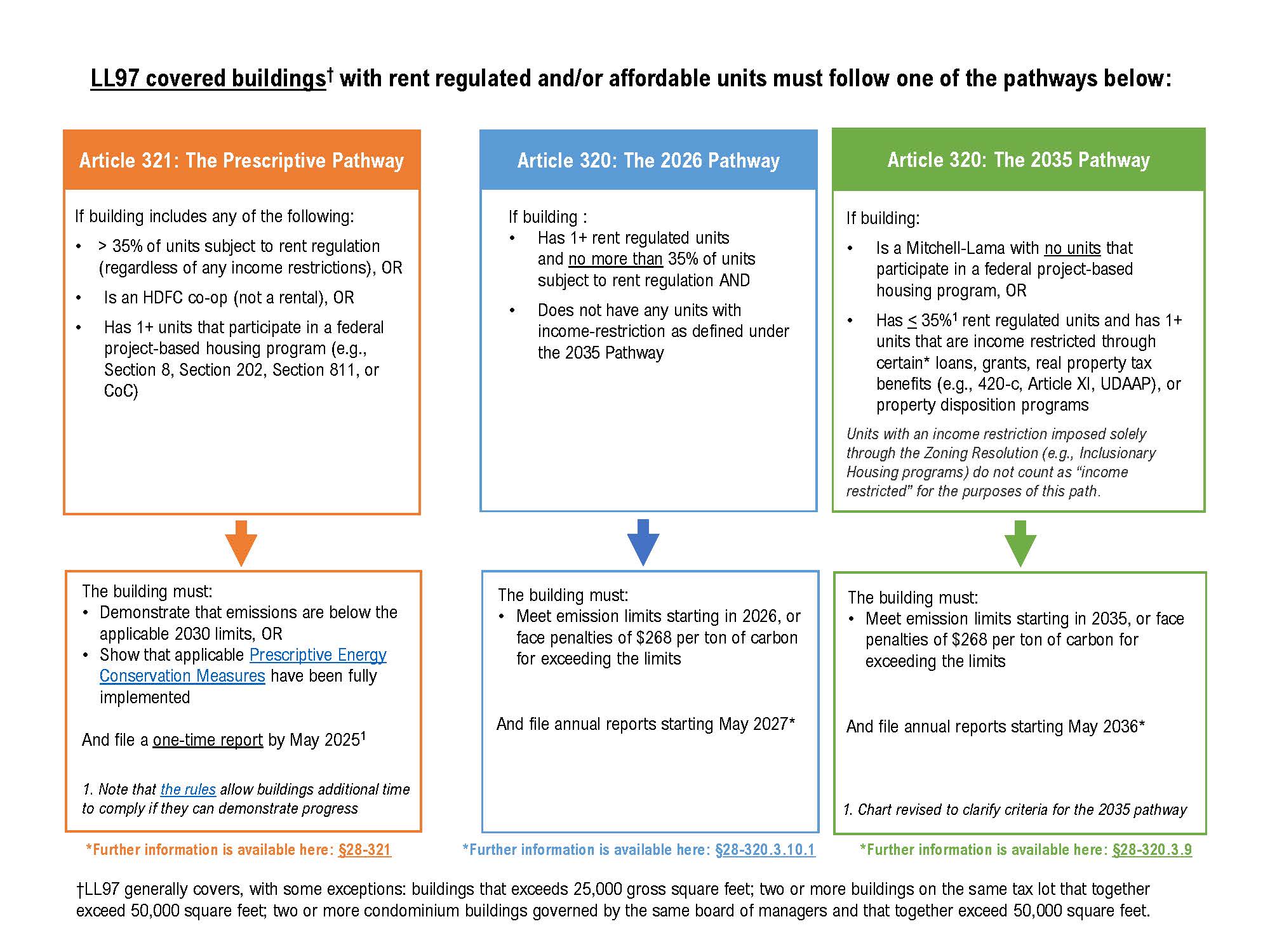
Do you need more information about Local Law 97 or need help getting started?
- View the Local Law 97 Guidelines for Affordable Housing webpage for more information
- Visit the updated LL97 Frequently Asked Questions which includes al of the questions we have received to date.
- Get free technical assistance with NYC Accelerator. To connect with a dedicated affordable housing account manager contact (212) 656-9202 and/or info@accelerator.nyc
Sustainability Trainings and Resources
- Updates to the Preservation Design Guidelines workbook and process
- Geothermal 101: The purpose of this training is to educate people on the benefits of geothermal technology, discuss what is being used in the NYC market, and get people excited about geothermal!
- DEP Stormwater Permitting Workshop: This training is to help owners and designers better understand the rules and the process for stormwater permitting. Getting ahead of these requirements could help avoid late-in-the-game problems of roof usage.
- HPD’s New Construction Design Guidelines Training: Join HPD staff to learn about the new New Construction Design Guidelines and compliance process. We will share updates related to HPD BLDS, Sustainability, and Resiliency
- Decarbonization Roadmap for Multifamily Affordable Housing: a decarbonization roadmap for affordable housing in New York City.
- HPD's Green Communities Training: Climate Ready Buildings is now available! These trainings are a prerequisite to certification for EGC or LEED.
- HPD's Green Communitites Training: Healthy Homes NYC is a free webinar developed by the Health Department and the Department of Housing Preservation and Development (HPD) for HPD-financed projects. It is intended for architects, general contractors and building owners/developers. The training focuses on healthy building practices during building design, construction and renovation and during on-going building operations and maintenance.
- HPD Solar Resources: Access Solar One's resource page dedicated to the Solar Where Feasible Program. Resource page includes past workshops, tutorials, case studies and a sign up for future workshops.
- NYC Accelerator Learning Center: New York City industry professionals can now access free online training courses on building and energy topics. The NYC Accelerator Learning Center offers trainings and resources to grow the skills and knowledge needed to support your next energy improvement project.
Additional Resources for Healthy Buildings
- International Living Future Institute's Red List Free Products List: The Living Building Challenge Framework for Affordable Housing outlines building strategies for multifamily affordable housing projects. The guide provides an overview of the materials requirements in the Living Building Challenge.
- EPA's Safer Choice Cleaning (and other) Products List: Search products that meet the Safer Choice Standard.
- New York State Green Cleaning Program Resources: Offer facility managers, school administrators, educators, and other governmental agencies an abundance of information and tools to promote the adoption of effective green cleaning practices, leading to healthier indoor environments.
- Healthy Building Network's HomeFree Product Selection Guide uses a red-to-green ranking system to compare different types of products based on their hazardous content. It is informed by our comprehensive research into the hazards associated with building products that may impact building occupants as well as fenceline communities and workers throughout the product's life cycle.
Resident Resources
- Residential User Tips for Air Source Heat Pumps
- NYC's Utility Assistance Programs
- Ensuring Safe Ventilation
Incentive Programs
- NYSERDA Programs for Multifamily Affordable Housing
- NYSERDA RetrofitNY Program for Carbon Neutral Retrofits
- Con Edison Multifamily Programs
- Con Ed Clean Heat Program
- National Grid Programs
- New York State Weatherization Assistance Program
- Multifamily Water Assistance Program
- DEP Water Conservation and Reuse Grants
Featured High Performance Projects
Sustainability Metrics
As of January 1, 2025:
- Projects certified by EGCC: 441
- Projects on the path to EGCC certification: 269
- LEED Certified Projects to date: 59
- Passive House Projects closed: 41, including 5 funded through HPD’s Future Housing Initiative
- HPD Electrification Retrofit Pilot Projects closed to date: 24 buildings with another 23 in the pipeline
- HPD Resilient & Equitable Decarbonization Initiative (REDi): 7 buildings in pipeline to date
- GHPP Projects closed to date: 44
- HPD’s Solar Where Feasible program: >15 MW to date



